Results 21 to 30 of 170
-
09-10-2015, 09:09 AM #21

This is a "genium and authentic" dip at toe on a french razor from 1810 1820
the reason is to avoid the toe to sleep on the edge.
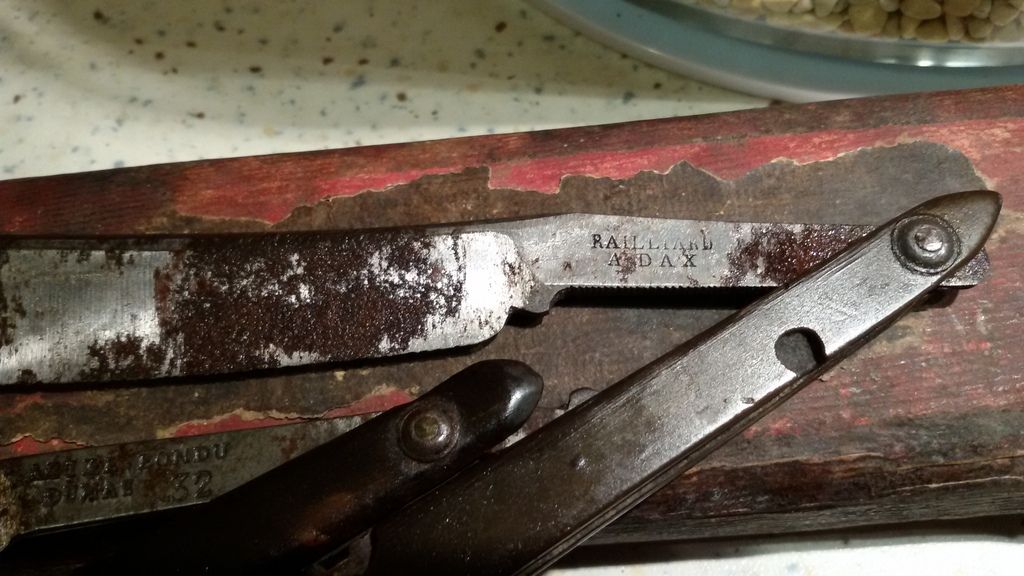
Here is a picture with other old french shaver from the same period, note the "Guerre à Langres" with the Royal Scepter from the first restauration of 1815, (before during the Napoleonic time it was an ottoman stick of command with the cressent, because evry reference at the royaltie power was strictly banned) and one of the most ancient razor maker of Thiers DUMAS from 1815 1820, you can also notice the shap of the scales typical from the 1800 1820 area, with large washers.
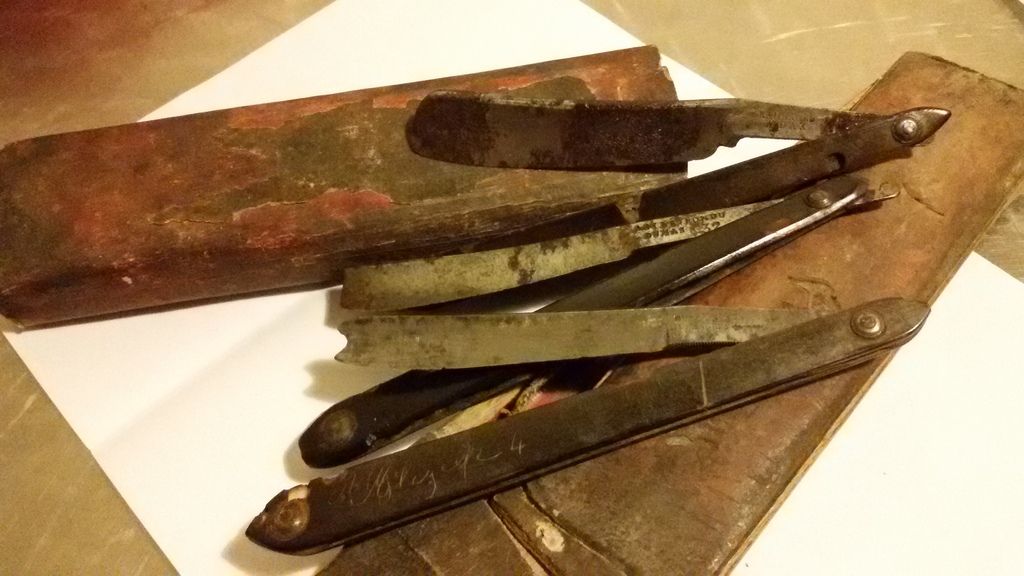
What is very specific of XVIII and early XIX century razors is the back that is ground at the point of the balde...I'll post some exemple later.
Here is a good exemple
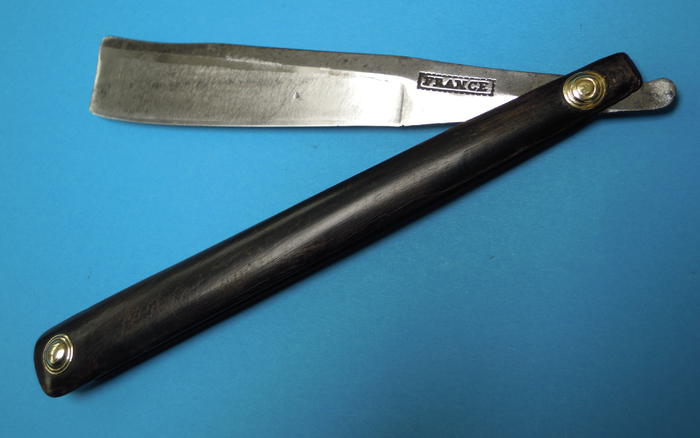
Last edited by charlie48horlogerie; 09-10-2015 at 09:17 AM.
-
The Following User Says Thank You to charlie48horlogerie For This Useful Post:
Fikira (09-10-2015)
-
09-10-2015, 09:15 AM #22

Although I appreciate this extra information enormously,
I'm going to repeat what I've explained in the previous posts
(I know, the last posts are written not so long before your reply, so you didn't had
the chance to read it of course)
What I mean by a "Dip-at-toe" is not the hollowing at the edge in the region of the tang,
A "Dip-at-toe" is the more or less hollowing at the toe, the tip of the blade, and this at the spine
(back of the blade), not at the edge
Like this:
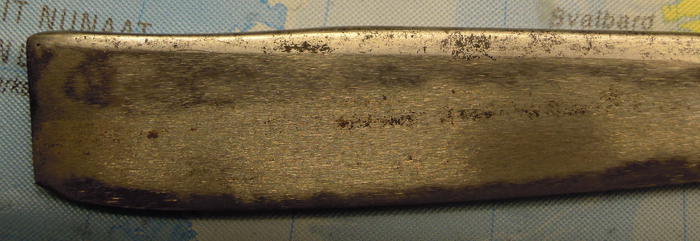
Thanks!Last edited by Fikira; 09-10-2015 at 11:19 AM.
-
09-10-2015, 09:41 AM #23

Hello
I think there is a bit of confusion here and Judge Lummus himself is lost : dip at toe isn't what me call "goutte de sang" in french is the special figure of creating a dip of metal on the end of the edge. I applologize if I was not clear on the first message (I beleded toe was the shoulder arear...).
The other feature is a ground on the back of the blade but in the point area...so this is a dip at toe, with the ottaman scepter !
So this razor was made between 1793 and 1814
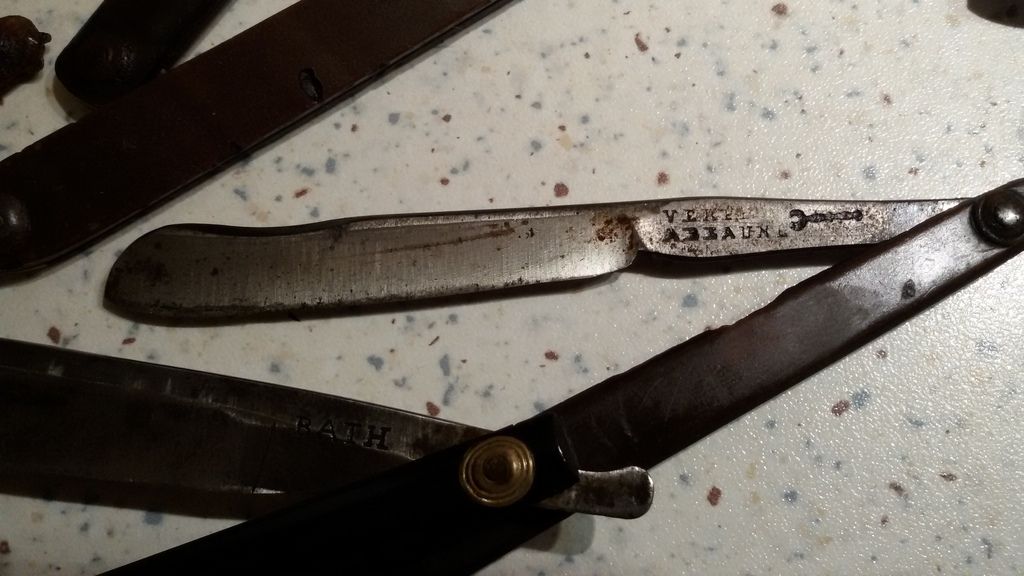
-
-
09-10-2015, 10:04 AM #24

No problem at all, it's a tricky one, I had to read the sentence of "Lummus" a few times before I understood, English not being my mother language doesn't help of course
 but "a slight hollow in the back of the blade, near the toe" is thus a "Dip-at-toe"
but "a slight hollow in the back of the blade, near the toe" is thus a "Dip-at-toe"
"Dip-at-toe" is shorter of course, and I thought it had a "ring", it sounded good, that's why I called it like that, but of course it is easy to get confused... Sorry...
But hey, the more we speak about it, the more everything is becoming clear I guess, thanks for the input, really appreciate it!
It seems that "Lummus" is talking about a Sheffield's "Dip-at-toe", the period he is talking about should be, IMHO, when the English makers made this kind of feature (I think), meaning, although the French used this feature too, this doesn't need to fit the timeframe "Lummus" is talking about.
It can be compared with the period when "fluting", or "shoulder" began, both the English and French makers began to make this kind of features in a specific timeframe, but that timeframe is different for the English, or the French makers...
BUT, this gives us again another very important part of extra information!
Thank you very much!Last edited by Fikira; 09-10-2015 at 10:07 AM.
-
09-24-2015, 06:50 PM #25

Here is my contribution to this subject. One is a Marsden and the other is a Roberts cast steel. Believe both are from the same period, late 18th Century. I say that based on the shape of the blade. Scales could be original and believe they are horn. Both are fairly common early stubtail Sheffieds based on my research. Just cleaned them up a bit and don't plan to do much more to them other than enjoy their beauty.
-
The Following User Says Thank You to ajkenne For This Useful Post:
Fikira (09-24-2015)
-
09-24-2015, 07:10 PM #26
-
The Following User Says Thank You to ScienceGuy For This Useful Post:
Fikira (09-24-2015)
-
09-24-2015, 07:21 PM #27

Agree. Both of these appear to be similar to the photo C razor in the Dr Lummus article.
-
09-24-2015, 07:25 PM #28

Nice pieces indeed, and very end 18th C., but I seem to miss the distinctive feature of a "Dip-at-toe", which is:
the (more or less) hollowing at the very end of the blade, at the toe / tip, and this at the spine
(back of the blade), not at the edge (and not at the spine near the tang)
Like this:
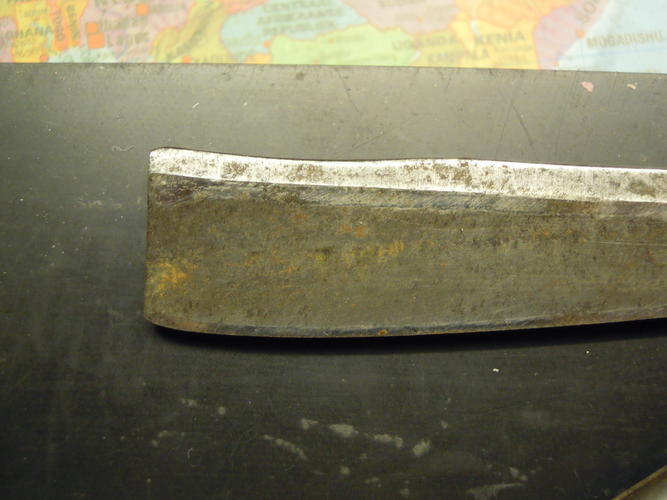
But very nice razors indeed!
Thanks!
-
09-24-2015, 07:49 PM #29

Thanks for the photo and additional explanation of dip at toe. Clearly these are not in that category. I will now be on the look out for one. Thanks again!
-
The Following User Says Thank You to ajkenne For This Useful Post:
Fikira (09-24-2015)
-
09-24-2015, 08:38 PM #30
-
The Following User Says Thank You to Fikira For This Useful Post:
ajkenne (09-24-2015)


 317Likes
317Likes LinkBack URL
LinkBack URL About LinkBacks
About LinkBacks






 Reply With Quote
Reply With Quote


